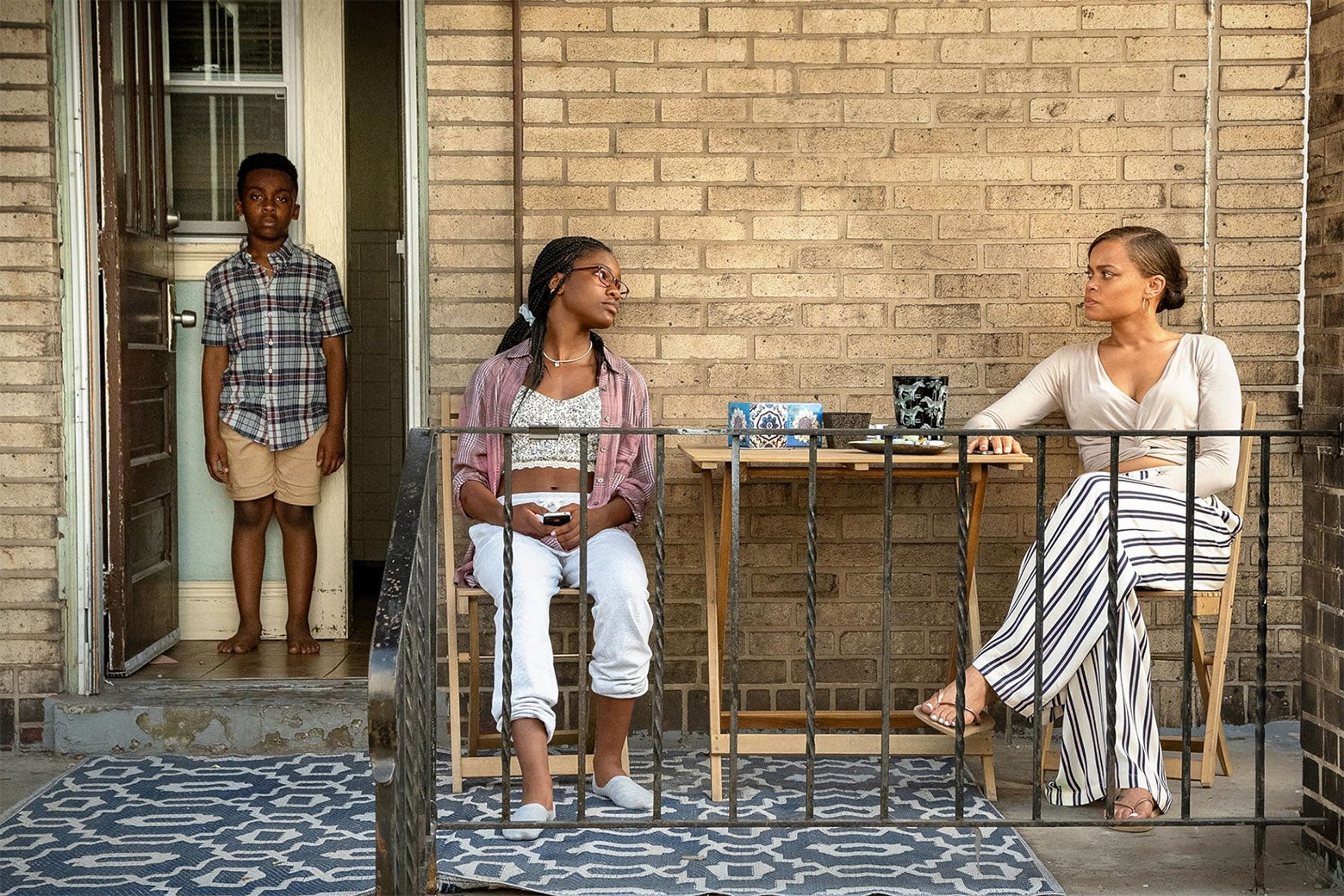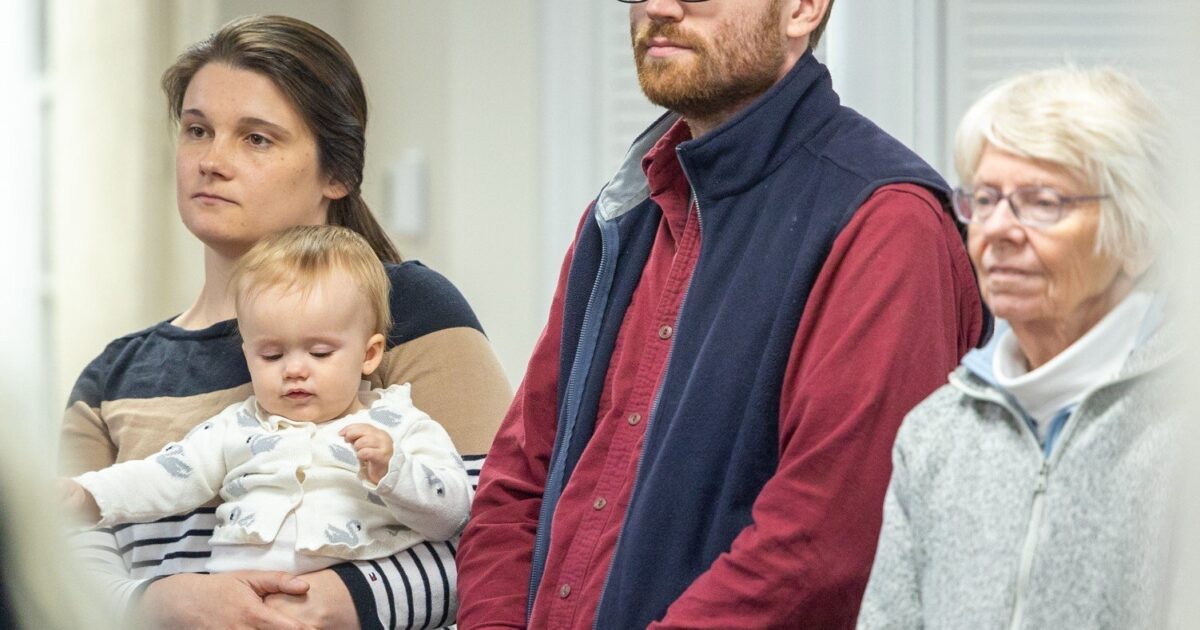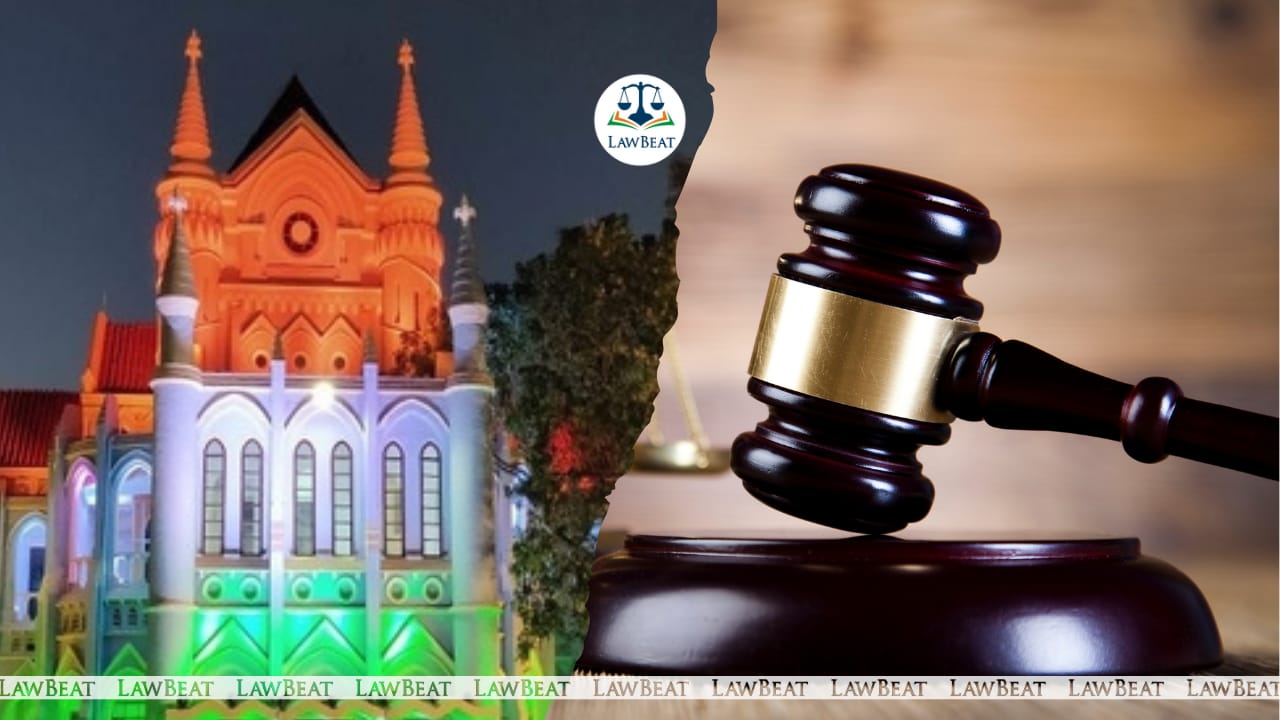
Even as a tween growing up during the 1980s, a time many people consider to be the golden age of horror movies, I couldn’t understand why you’d willingly pee your pants when life is scary enough as it is. Still, this past weekend, I streamed Netflix’s current No. 1 movie, The Deliverance, by Lee Daniels, the director of Precious and The Butler. In it, Andra Day is Ebony, a single mom of three, and Glenn Close plays their born-again grandmother, in a campy role much remarked upon on X. Shortly after moving houses, the children begin behaving bizarrely. The youngest converses with an unseen entity. His eyes turn into dark pools; he slips into trances and says disturbing things. After the kids break down at school one day, they’re taken to the hospital. They undergo brain MRIs, which are normal, and a doctor declares there’s nothing wrong with them.
Spoiler alert: The children are possessed, and the cure is Jesus.
Satan taking the reins of your soul isn’t just a cinematic trope: 51 percent of Americans believe in demonic possession, according to a 2013 YouGov survey. The Deliverance is even based on a true story of a family from my home state of Indiana. A mother thought her children had been possessed; what made the case unusual is that several state and local authorities agreed.
The best of movies, TV, books, music, and more, delivered to your inbox.
Thanks for signing up! You can manage your newsletter subscriptions at any time.
I am not one of those believers, but I watched the movie because when my daughter, Rory, was 6 years old, she began having unexplained and terrifying symptoms like Ebony’s children, and my husband and I found ourselves living in a real-life horror film. While demonic possession creates a thrilling plot, and believing in spirits can help make sense of the unsensible, there’s real danger in pointing the finger at Lucifer. Watching The Deliverance, I kept thinking: If I had sought exorcism instead of medical specialists for my daughter, she could have died.
Rory was a typical first grader, funny and full of energy and imagination. Wearing a sparkly blue mermaid tail—a gift from her grandmother—she and friends spun make-believe scenarios for endless hours of entertainment at the neighborhood swimming pool. She loved historical American Girl dolls too, and on weekends, she begged to go to a living-history museum near our home so she could pretend to live in the 1800s. We went often enough that we bought an annual membership and a pint-size period calico dress so she could look the part.
That spring, though, something about Rory changed. It started with agitation. The smallest things would send her into rages. Like Dre, the youngest son in Ebony’s family in The Deliverance, she became aggressive, once looking menacingly at a family member as she drew her finger across her throat in a threatening gesture. Her voice, normally lilting and punctuated with laughter, turned flat and devoid of emotion. Her speech, previously precocious, became nonsensical words strung together. Then she fell completely silent, sitting in strange positions with her dark, vacant eyes fixed on a faraway point.
One day, after I hadn’t heard her voice for some time, Rory turned her head slowly, looked at me intently, and said, “Mama, can you turn off the TV? It’s telling me to die.” Chilled to my core, I snapped off the cartoons and held her tightly in my arms.
I grew up in the Catholic Church. My parents, who attended Catholic school their entire lives, enrolled me in kindergarten at the parish near our house. After switching me to public school in first grade, they dutifully sent me to CCD every week for my religious education. When my grandmother was dying of cancer, the notorious nun who ran the program castigated my mom over our spotty attendance, and a few years later, my family effectively left the church for good.
Yet when Rory became mysteriously, terrifyingly ill, I remembered my grandmother’s devotion to St. Jude, the patron saint of hope and impossible causes. Some nights, when my husband got home from work, I would walk the two blocks to our neighborhood Catholic church and sit on a bench outside, weeping and pleading for my daughter to somehow return to me.
Still, doctors could find nothing physically wrong with Rory. Many suggested that her problems were purely psychiatric. Some thought they were behavioral and implied my parenting style could be to blame. No one directly suggested that evil was at work, though I suspect that had more to do with our white middle-to-upper-middle-class milieu than with what was happening to Rory. Despite being agnostic, in a moment of abject desperation, I bought a bundle of sage and smudged every corner of my 80-year-old home. I figured it couldn’t hurt, but all it did was aggravate my allergies.
It never occurred to me that I should consider casting out demons—although if someone had suggested this, I might’ve tried it, especially if it brought with it a community to rally around and support us. Instead, we became pariahs. With no explanation for what was happening to Rory, many in our circle of friends and local community othered us and distanced themselves to protect against the fear that what had come for my child could easily come for theirs too. Like Ebony in The Deliverance, who (the movie implicitly argues) opened the door to the devil by abusing alcohol, drugs, and her children, the intimation was that we must have done something to invite this. During my family’s crisis, even I found myself wondering: Why is this happening to Rory? What have we done to deserve this? As I frantically tried to figure out why my little girl had completely changed, seemingly overnight, I also wondered where all the people in my life who said they would pray for my family had gone.
There is a long history of attributing the inexplicable to the work of the devil. Epilepsy, which was first described 4,000 years ago on an ancient tablet in Mesopotamia, was thought for millennia to be caused by evil spirits entering the body, when it is in fact due to electric changes in the brain. For time immemorial, mental illness has been attributed to the devil. In her book The Great Pretender, Susannah Cahalan writes that historically, exorcisms were often used to drive the “devil” out of unquiet minds. When a child suddenly becomes different from how they were, without an explanation, possession offers a framework that may appeal to some. People who live in underresourced communities and belong to marginalized racial and ethnic groups are less likely to be believed by physicians, so when something goes wrong, it’s much harder to find help. Possession can provide reassurance and answers—and therein lies the danger.
It took two years of nonstop searching and advocacy to find appropriate care for Rory. After seeing more than 20 medical professionals in four states, I found a team of doctors in North Carolina that was evaluating children with symptoms similar to Rory’s. These new doctors ordered an MRI of Rory’s brain, and, just as happens with the kids in The Deliverance, it was normal. Fortunately, though, the other testing her doctors ordered was comprehensive and extensive. It revealed several markers of inflammation in her blood and autoantibodies in her spinal fluid. She was diagnosed with autoimmune encephalitis, a life-threatening inflammatory brain disease in which autoantibodies attack neural receptors, causing psychiatric and neurological symptoms such as hallucinations, psychosis, loss of language, and involuntary movements.
AE was first described in 2005, when Josep Dalmau, a researcher at the University of Pennsylvania, and colleagues identified a type of autoimmune disease that targeted the brain’s NMDA receptors. Since then, researchers have discovered more than 20 new antibody-mediated diseases classified as AE. They believe that the most likely cause of the illness is an inappropriate immune response to a viral trigger.
Initially considered very rare, AE may be more common than previously thought. A 2018 study found that AE has a prevalence of 13.7 per 100,000—a rate that is increasing due to more research and better detection. Still, it’s frequently misdiagnosed as schizophrenia, bipolar disorder, and autism. And yes, historically, demonic possession.
At the end of The Deliverance, Ebony accepts Christ as her savior and drives out the demon, and her children are themselves again. Rory, now a college sophomore, has returned to being the same sunny, creative person she was before all this started too. But no amount of holy water or rebuking evil would have cured her. Rory was treated for years with steroids, immune-suppressing medication, and monthly infusions of healthy donor antibodies called intravenous immunoglobulin that cost $16,000 a dose. Fortunately, my husband’s job offered good insurance that covered the expensive treatments. Though it caused financial hardship, I was able to pause my work and use my journalism skills to investigate what was happening to my daughter and navigate the medical system. The monthly 1,200-mile round-trip visits to Rory’s doctors drained us financially and took a toll on my health, but I know they would not have been an option for so many families. What happens to their children? This is what haunts me.
Slate is published by The Slate Group, a Graham Holdings Company.
All contents © 2024 The Slate Group LLC. All rights reserved.
source



 Alex Dovbnya
Alex Dovbnya









 58 °F
58 °F
